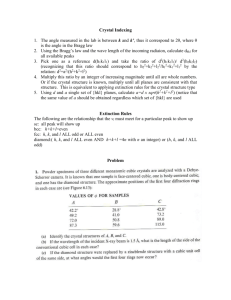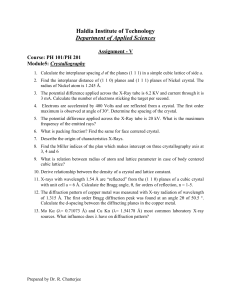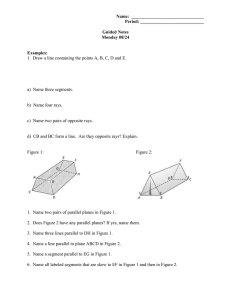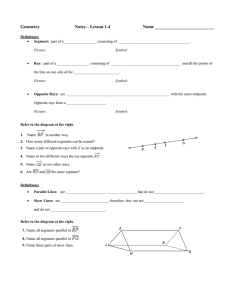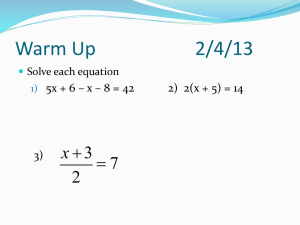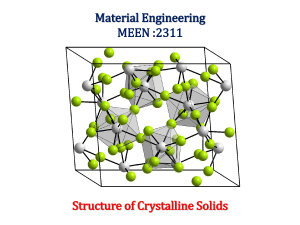Document 14141538
advertisement
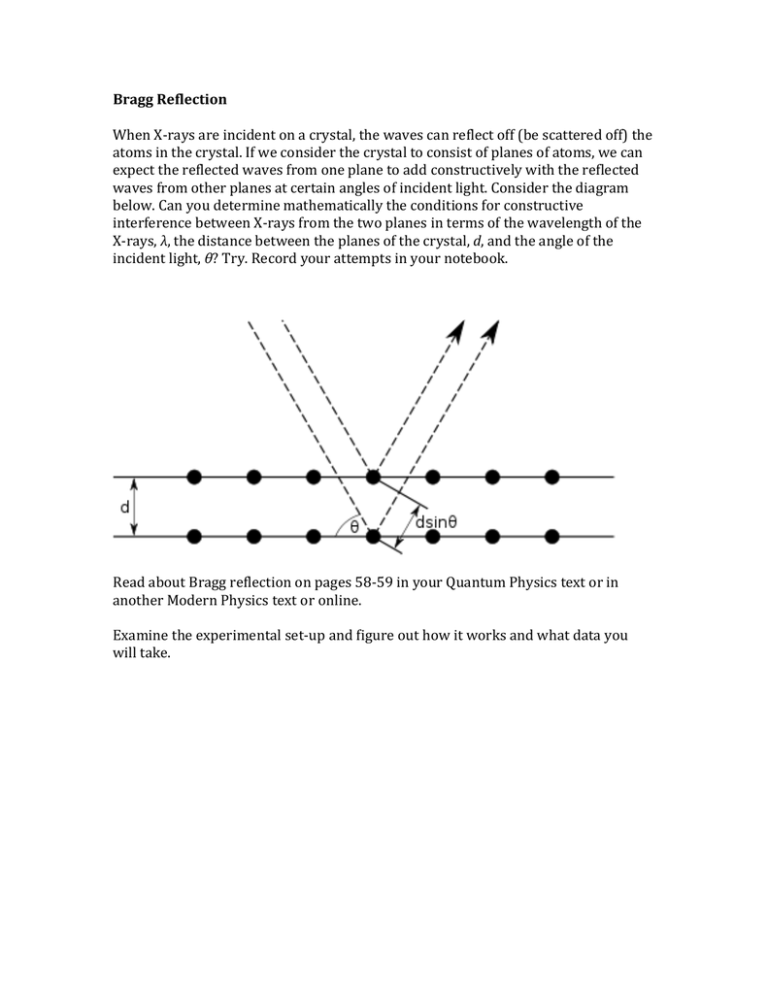
Bragg Reflection When X-­‐rays are incident on a crystal, the waves can reflect off (be scattered off) the atoms in the crystal. If we consider the crystal to consist of planes of atoms, we can expect the reflected waves from one plane to add constructively with the reflected waves from other planes at certain angles of incident light. Consider the diagram below. Can you determine mathematically the conditions for constructive interference between X-­‐rays from the two planes in terms of the wavelength of the X-­‐rays, λ, the distance between the planes of the crystal, d, and the angle of the incident light, θ? Try. Record your attempts in your notebook. Read about Bragg reflection on pages 58-­‐59 in your Quantum Physics text or in another Modern Physics text or online. Examine the experimental set-­‐up and figure out how it works and what data you will take.
